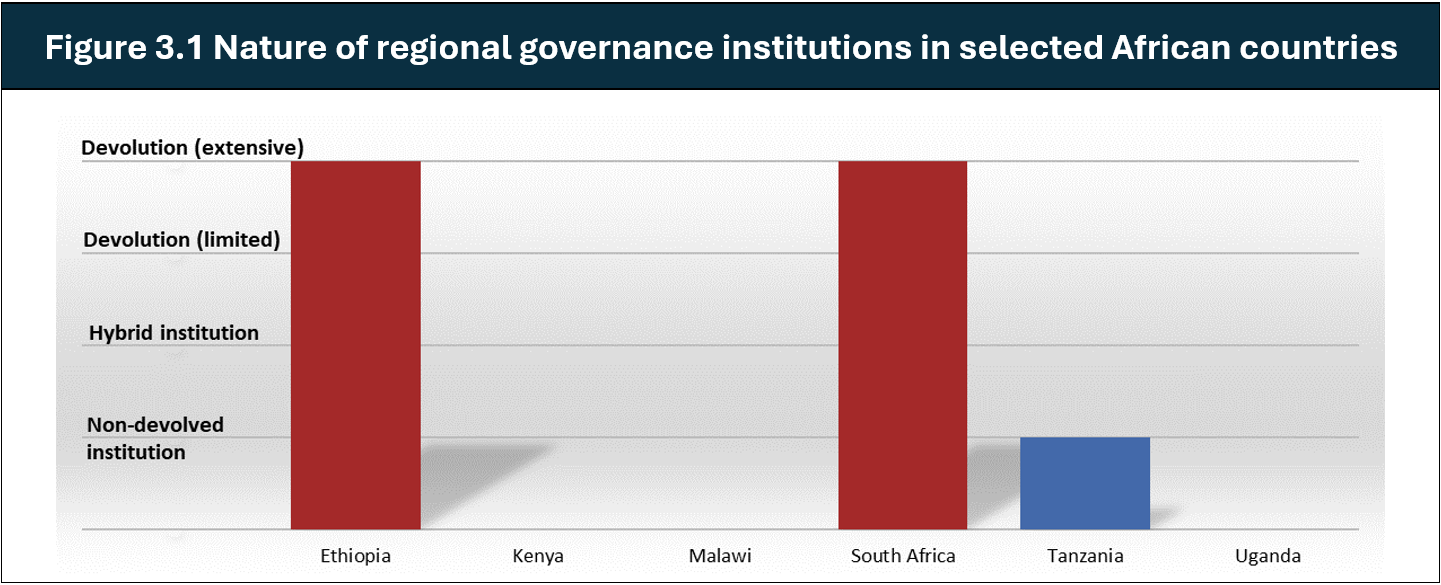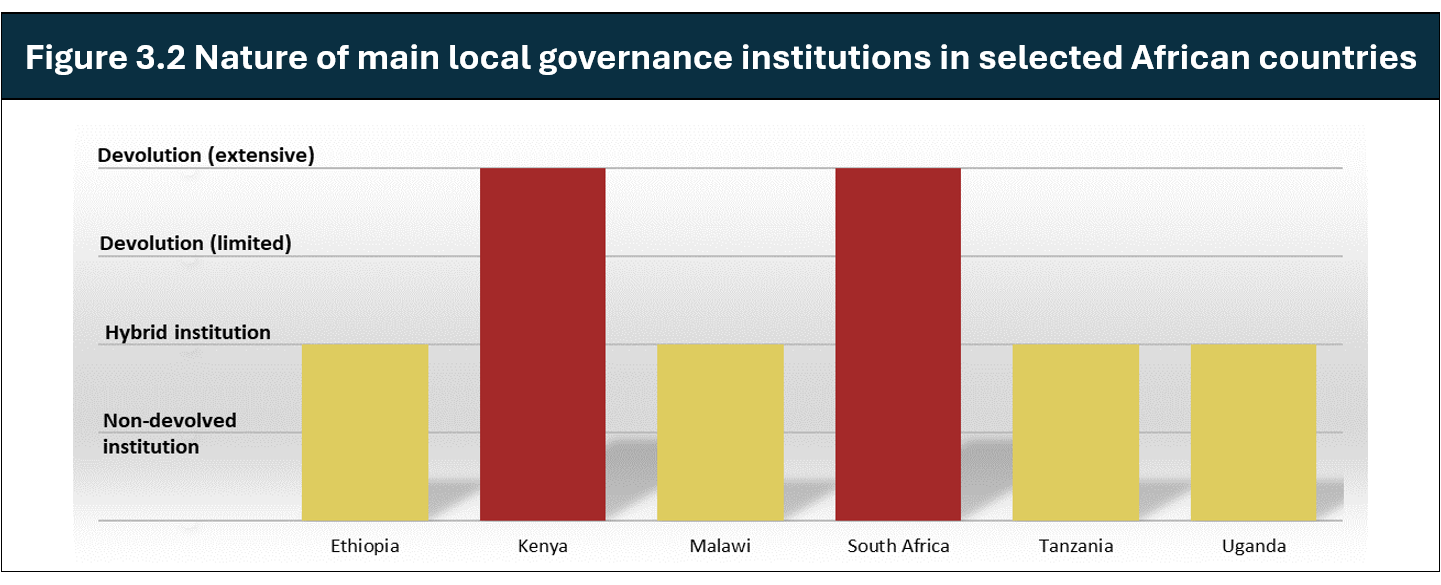
Many countries in Africa and around the world have established regional and local governance institutions based on the notion that government powers are best exercised at the lowest level of the public sector as efficiently possible. Development partners are similarly increasingly aware that development challenges should be solved as close to the people as efficiently possible.
Yet, a recent assessment of subnational governance institutions in Sub-Saharan Africa—conducted by the Local Public Sector Alliance (LPSA) with support from UNCDF and the Hewlett Foundation—suggests that the ability of subnational officials to respond to the needs of their constituents depends considerably on the authority, autonomy, functional powers, and resources provided to subnational governance institutions in different African countries.
Using the LoGICA framework to assess the state of local governance institutions
The Local Governance Institutions Comparative Assessment (LoGICA) Framework is an assessment framework developed by LPSA which aims to inform country level policy debates and reforms on decentralization and localization, by ensuring a better understanding of the exact nature of a country’s subnational governance institutions and multilevel governance arrangements, and by placing each country’s experience in a comparative global or regional context.
The report An Initial Assessment of the State of Local Governance Institutions in Sub-Saharan Africa presents the findings generated by applying the LoGICA Framework – specifically, LoGICA’s Intergovernmental Profile (IGP) – to six countries in Sub-Saharan Africa. The IGP explores the structure and nature of its subnational governance institutions. An overview of the detailed methodology used in assessing subnational governance institutions is available here.
The countries selected for this initial assessment of the state of local governance institutions in Sub-Saharan Africa included Ethiopia, Kenya, Malawi, Tanzania, South Africa, and Uganda. It is noted that this small, non-representative sample is unlikely to reflect the diversity of practices and experiences with respect to subnational governance of the 49 Sub-Saharan members of the African Union (AU).
There is considerable variation in the nature and degree of empowerment of regional and local governance institutions
Despite the non-representative nature of the sample, this assessment provides initial insights into the nature of subnational governance institutions in Sub-Saharan Africa.
First, only three out of the six countries examined have regional governance institutions. The three largest countries measured by population size—Ethiopia, Tanzania and South Africa—have a governance level that can clearly be identified as regional (i.e. operating at the level of state, region, or province). Following the LoGICA assessment framework, two out of the three regional governance levels (regional states in Ethiopia and provinces in South Africa) are identified as fully devolved levels, but in Tanzania, regions are found to be deconcentrated administrative divisions of the central government.
Second, although not all countries in our selection have a regional governance level, all six countries have a clear ‘main’ local governance level. That said, the average population that local governance jurisdictions serve differs markedly across our sample—from under 100,000 residents in Ethiopia’s woredas to over 1 million in Kenya’s counties. At the local level, most local governance institutions in our sample are classified as “hybrid” institutions based on the LoGICA framework– meaning that they face significant restrictions in autonomy and authority to the extent that they cannot be considered fully devolved local governments. At the local level, only county governments in Kenya and local governments in South Africa are deemed to be fully devolved local governments (i.e., devolved local governments with extensive authority and autonomy).
The limited number of fully devolved local governments in our sample of African countries can be attributed to significant restrictions in autonomy and authority imposed upon local institutions.
- Along the political dimension, limits on autonomy and authority are reflected by routine interference from higher levels of government (e.g., Ethiopia); requirements for local laws or decisions to be approved by the central government (e.g., Tanzania); and the appointment of national MPs as voting members of local councils (e.g., Malawi) – all of which significantly restrict the ability of local representatives to formulate local policies solely in accordance with the priorities of their constituents.
- Along the administrative dimension, limits on autonomy and authority are reflected by local entities being managed and staffed by officials appointed by higher levels of government (e.g. Uganda); and/or local entities being unable to determine their own organizational structures (e.g. Tanzania) both of which significantly restrict their ability to implement priority programs in accordance with local priorities.
- Along the fiscal dimension, local budgets commonly require approval by higher levels of government (e.g. Malawi) or the national parliament (e.g. Uganda) and/or can be adjusted if the local budget is not in line with national priorities (e.g. Tanzania). In addition, with some exceptions, local governance institutions in Africa typically lack fiscal space, resulting in a heavy reliance on tightly earmarked fiscal transfers to finance local services and development (e.g. Uganda) which severely restrict local fiscal autonomy in the financing of local priorities.
In many cases, these limits on local authority and autonomy are clearly spelled out in law. In other countries, there are contradictions in the legal framework or gaps between the legal situation and actual practices.
Conclusions and Policy Implications
When considering the differences in nature of the subnational governance institutions among countries in Sub-Saharan Africa, it may be useful to recollect two distinct models of subnational governance.
The first is the system of ‘bottom-up’ (or ‘participatory’) planning combined with ‘top-down’ decision-making. This arrangement is traditionally associated with non-devolved or hybrid local governance institutions. Under this approach, priorities are identified at the local level, which are then passed up to the regional and/or national level, with decisions about resource allocation ultimately being made at the higher level. While this system does involve local governance institutions and community stakeholders in public decision-making (and enables higher levels of government to make claims about ‘decentralizing’ responsibility), authoritative decision-making power in these countries is actually retained at the higher level. Unfortunately, the fact that decision-making remains centralized limits the potential efficiency and accountability benefits of this approach. Yet, based on our initial analysis of local governance institutions in Africa, this appears to be the dominant model of decentralization.
The second model is a system of ‘devolved planning and finance’ which allows local governments to make their own decisions on the use of available resources. Local governments may still rely extensively on fiscal transfers from the central government to finance their activities and be required to follow certain regulations or guidelines (as is the case in Kenya and South Africa), but they nonetheless still have a large amount of discretion over what those funds are used for. Rather than merely preparing long ‘wish-lists’ of projects that are submitted to central government ministries for funding, this model of decentralization allows for a much more meaningful local planning process, in which local government officials are empowered to respond to the priorities of their local constituents.
It is important to recognize that one perspective or model of decentralization is not necessary superior to the other. These different approaches to decentralization do, however, imply very different levels of empowerment: while less autonomous local governance institutions facilitate public involvement or participation, non-devolved or hybrid local governance institutions do not offer local constituents the same levels of empowerment or agency as more devolved systems. As such, it is important to be clear what type of decentralization is being pursued in different countries.
Read the full report: Local Public Sector Alliance. 2024. An Initial Assessment of the State of Local Governance Institutions in Sub-Saharan Africa.





